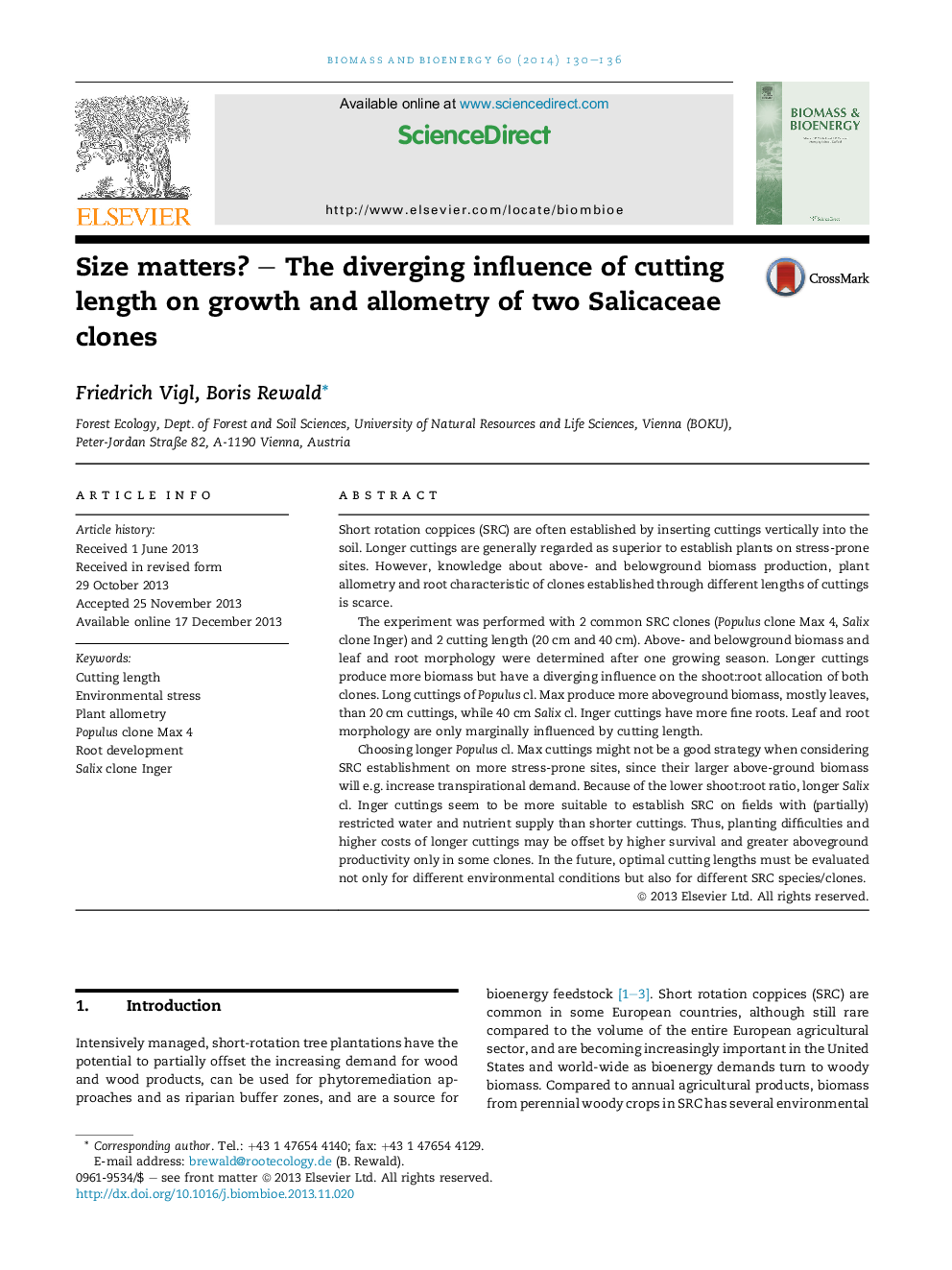| Article ID | Journal | Published Year | Pages | File Type |
|---|---|---|---|---|
| 676857 | Biomass and Bioenergy | 2014 | 7 Pages |
•Populus cl. Max 4 and Salix cl. Inger were grown from short and long cuttings.•Longer cuttings (40 cm) resulted in higher total biomass in both species.•Long cuttings of Populus had higher shoot, Salix cuttings higher fine root biomasses.•Implications for the deployment of long cuttings on marginal sites are discussed.
Short rotation coppices (SRC) are often established by inserting cuttings vertically into the soil. Longer cuttings are generally regarded as superior to establish plants on stress-prone sites. However, knowledge about above- and belowground biomass production, plant allometry and root characteristic of clones established through different lengths of cuttings is scarce.The experiment was performed with 2 common SRC clones (Populus clone Max 4, Salix clone Inger) and 2 cutting length (20 cm and 40 cm). Above- and belowground biomass and leaf and root morphology were determined after one growing season. Longer cuttings produce more biomass but have a diverging influence on the shoot:root allocation of both clones. Long cuttings of Populus cl. Max produce more aboveground biomass, mostly leaves, than 20 cm cuttings, while 40 cm Salix cl. Inger cuttings have more fine roots. Leaf and root morphology are only marginally influenced by cutting length.Choosing longer Populus cl. Max cuttings might not be a good strategy when considering SRC establishment on more stress-prone sites, since their larger above-ground biomass will e.g. increase transpirational demand. Because of the lower shoot:root ratio, longer Salix cl. Inger cuttings seem to be more suitable to establish SRC on fields with (partially) restricted water and nutrient supply than shorter cuttings. Thus, planting difficulties and higher costs of longer cuttings may be offset by higher survival and greater aboveground productivity only in some clones. In the future, optimal cutting lengths must be evaluated not only for different environmental conditions but also for different SRC species/clones.
